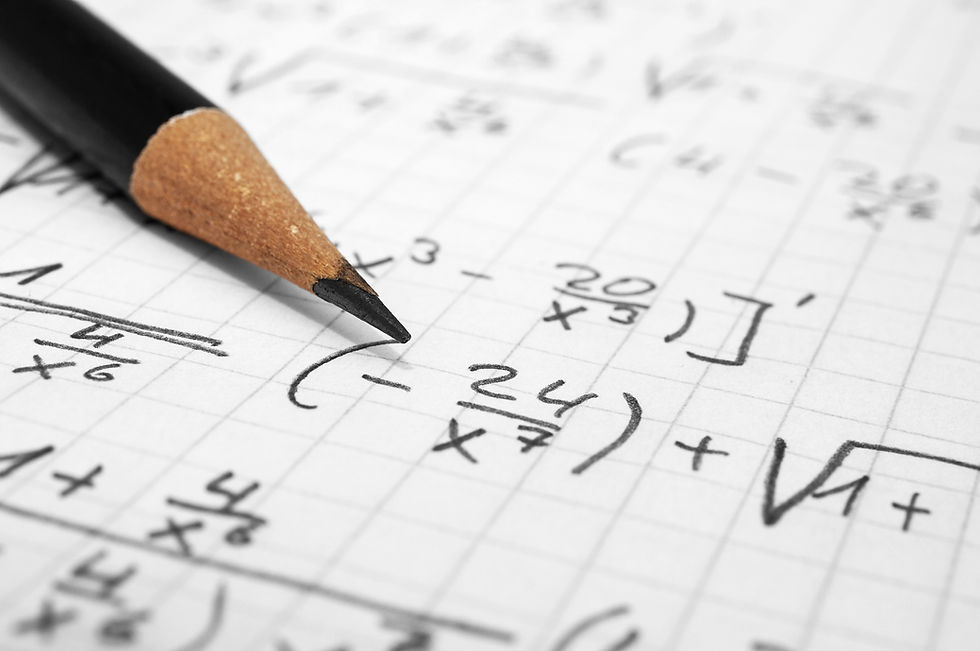ACT Math and "Picking Numbers"
- Philip Martin

- May 19, 2023
- 3 min read
I've written before about two other ACT Math mini-strategies (called Backsolving and Drawn to Scale). There is a third such strategy that is crucial for any student taking the ACT: Picking Numbers. Immediately, understanding the Picking Numbers strategy and having comfort in its implementation will increase a student's ACT math score without having learning new or relearning old content.
Like Backsolving, this strategy takes for granted that one of the 5 answer choices must be the correct answer, and it involves matching the question (usually an expression with a variable or variables) to the answer choices (which also usually feature a variable or variables) after arbitrarily choosing a value for the variable.
That sounds WAY more complicated than it is. Check out the following math question from a previously administered ACT test:

Traditionally, an Algebra teacher would require a student to add these expressions together and simplify, which would involve manipulating one or each expression, creating a common denominator.
On ACT day, many students will try doing that, will fail to do so, then will end up guessing (after wasting who knows how much time!!).
But what if there were a better, simpler way?
This is where Picking Numbers comes into play. What if we pretended that x = 2 and that y = 3? According to the question itself, that's allowed; x simply can't equal plus or minus y.
When we plug in these values for x and y (x=2 and y=3), our expression turns into this:
x/(x+y) + y/(x-y) = 2/(2+3) + 3/(2-3) = 2/5 + 3/(-1) = 0.4 - 3 = -2.6
Obviously, -2.6 is not one of the answer choices. However, when I plug in these same values for x and y into the answer choices, whichever of them gives a value of -2.6 must be the correct answer.
*Side note: because I've been studying these kinds of questions for a long time, I know that questions for which Picking Numbers and Backsolving are possibilities have a higher likelihood (especially in the final 20 problems on the test) of having an answer of A or E. For that reason, I'll start with A, then move to E, then if necessary come back to B, C, D.*
Start with answer choice A:
1/(x-y) = 1/(2-3) = 1/(-1) = -1 , which is not -2.6, so A can't be correct.
Now, try E (note: I can't type "x-squared" or "y-squared", so I'm going to skip the step of rewriting the original problem: assume I plug in x=2 and y=3, then...)
(4+9)/(4-9) = 13/(-5) = -2.6 ... that's it!
The moral of the story is this: it is very common for the ACT to require students to simplify or add or manipulate equations with variables. Often times, these equations or expressions could only be simplified or manipulated properly by a small percentage of high school math students. However, what separates the average student from the prepared student is the ability to apply proper strategy like Picking Numbers, which comes more naturally after practice and preparation!
---
In need of ACT preparation? Check out Mr. Martin's courses here.
In need of ACT preparation at your own pace? Check out Mr. Martin's self-paced course here.
--
Need a little extra help? Check out my free ACT System cheat sheets!




Comments